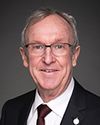I can only speak for my museum.
In fact, one of the two very direct and powerful influences of the task force report on museums in 1992 was the creation of a very powerful effort in our museum to engage in widespread repatriation talks with communities across the country, and we've been doing it ever since.
Second was the creation of the aboriginal training program in Indigenous Affairs that I mentioned, which has had a minimum of three people in it—sometimes six or seven—in response to that task force's report on the need to increase indigenous capacity across the country to handle their own provenancial materials, their own culture, their own stories. We've been doing that diligently ever since.
However, that's a very small aspect of the ways in which we, on a daily and monthly basis, engage with indigenous communities. We do everything from facilitating visits to collections to see their own material to the provision—by loan, by repatriation, or by other custodial sharing arrangements—of material back into communities.
Sometimes there are no museum-quality environmental controls to handle things, and we physically create them for those communities—for example, by putting discreet display cases in chief and band council offices. It is also sometimes redistributing or disseminating linguistic, craft and ceremonial knowledge that has resided with us for many decades—in some cases 150 years—that may in fact be lost in communities. We have done that across a broad range of areas, from the Far North to the coast of B.C. to Nova Scotia.
Finally, on a yearly basis, we send people into the field for discussions, for collecting, etc., including archaeological fieldwork. We have used all of those opportunities to talk to people about our collections and about the work they can do in their own communities.
To give you a very small example, we—



